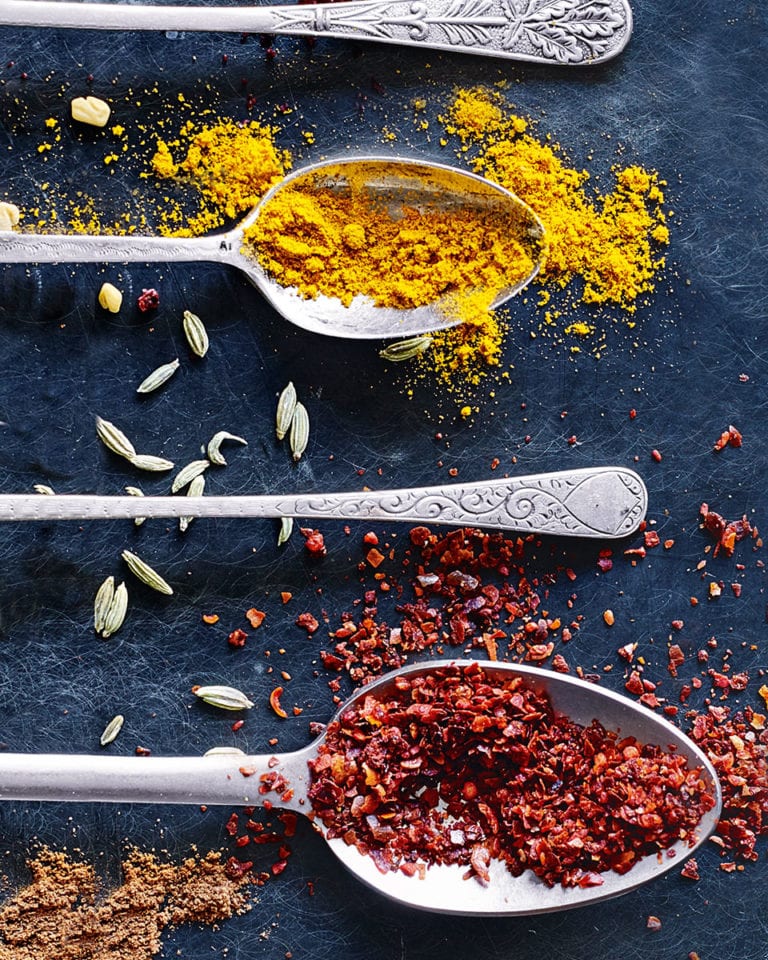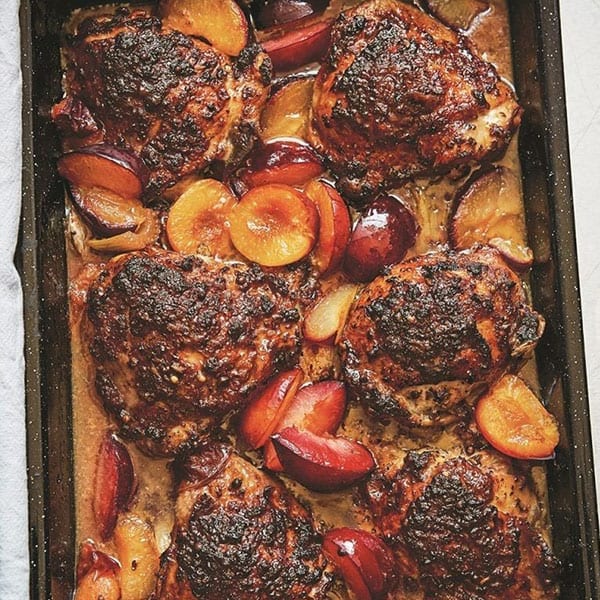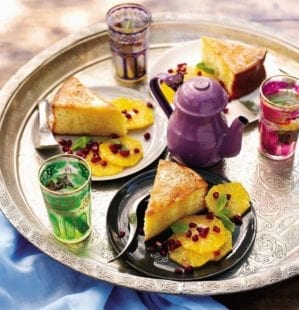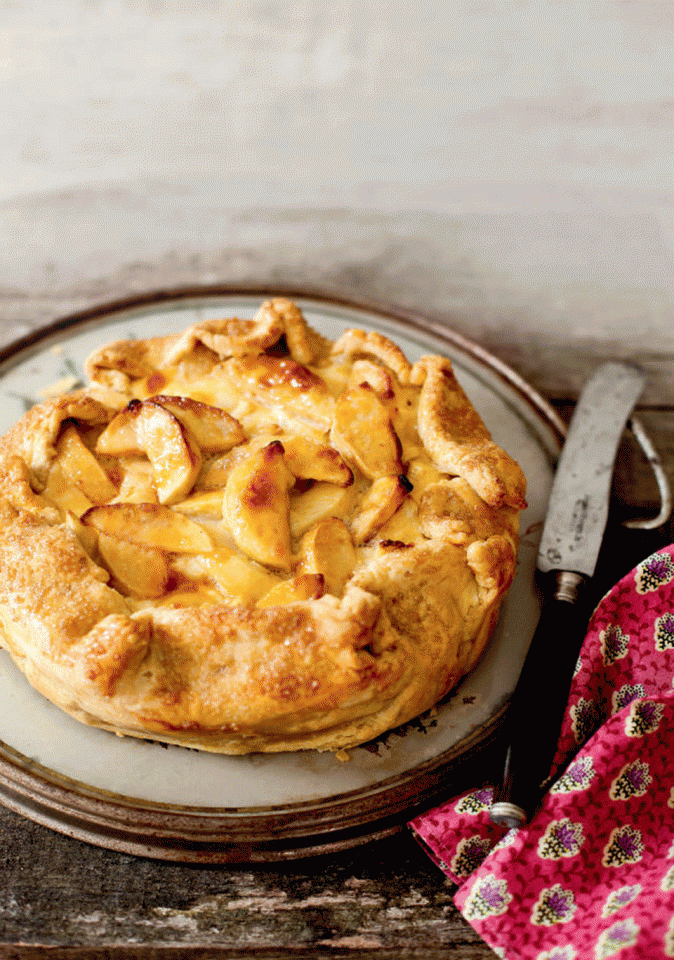Some like it hot: the science behind spices
Spices are wonderful, mysterious and sometimes a bit scary, with even experienced cooks wary of using them wrongly. Dr Stuart Farrimond demystifies these colourful, potent plant products and explains why
using them with a bit of sciencey know-how can transform your cooking.
From curries to cakes and even in ice cream, spices can be used in myriad ways. The secret to using them correctly? Feel the fear and season it anyway…

Be honest: you probably have half a dozen nearly full spice jars languishing in the back of your kitchen cupboards. A jar of nigella seeds for a moong dal recipe you cooked once? Saffron threads you’re too terrified to waste? Understanding a bit of spice science can banish the fear of getting it wrong and can bring new-found confidence – and flavour – to cooking.
A major reason for spice reluctance is historical – most spicy ingredients are native to tropical and subtropical regions, not chilly northern latitudes. In the Middle Ages, rare and exotic spices were prized for their magical and medicinal qualities and traded like currency, some more valuable than gold. So precious were these dried nuggets of flavour that throughout much of the 17th century, the Dutch and British waged a long bloody war over a group of small (now Indonesian) islands for the rights to grow nutmeg.
''Spices were pricey, glamorous status symbols enjoyed by the wealthy''
Spices were pricey, glamorous status symbols enjoyed by the wealthy. It took a long time for their use to filter down to the cooking pots of the masses in Britain. Even then, dishes often lacked sophistication compared to the cuisines of North Africa, Central America and Asia, where cooking with spices dates back thousands of years. So it isn’t surprising if Grandma’s ginger cake was the most flavourful fare you had as a child.
What actually is a spice?
- Spices come from a plant’s most precious parts and often contain foul-tasting toxins and repulsive substances intended by nature to ward off would-be predators.
- They can come from any part of a plant (other than the leaf), are used for flavouring and can usually be dried.
- They can vary widely in appearance and may be the seed, fruit (as with chilli), bark (cinnamon), underground stem (ginger and galangal), flower bud (capers and cloves) or resin (mastic and asafoetida).
- Green leafy plant parts may have a similar flavour but are instead called herbs and are usually best used fresh and added later in the cooking.
- A few hardy leaves that benefit from drying (such as bay) keep a foot in both camps and can be termed either a herb or a spice.
When abhorrent transforms into appealing
Spices are highly potent, often unforgiving, ingredients. On their own, many taste truly awful in all but the tiniest amounts – and nature intended them to be that way. Yet the offensive-tasting chemicals in spices have the curious ability to titivate the senses, taking on wondrous qualities when tasted in trace amounts.
A chemical called skatole, for example, is responsible for the abhorrent smell of faeces, but if we sniff it in tiny amounts it smells distinctly sweet and floral. As revolting as it sounds, this poo-smell substance is even used in perfumes
and as a flavouring in ice cream.

Asafoetida (hing in Hindi), a dried resin used widely in Indian/Pakistani cuisine, is known as ‘devil’s dung’ for good reason: its putrid aroma and sulphuric taste come from sulphur-carrying chemicals that are similar to substances in rotting meat. Asafoetida is so powerful in its raw form that it’s ground and diluted with flour to make it bearable in commercially sold powders. Yet adding a mere quarter teaspoon to frying onions transforms the originally abominable aromas into meaty, garlicky tones that give incredible depth of flavour.
Getting your timing (and technique) right
Cooks often make the mistake of using spices as they would salt, sprinkling a pinch or three into a dish midway through cooking. Use spices this way and you’ll forever be disappointed. Salt isn’t a spice: it’s a mineral extracted from the sea or from rock that dissolves easily in water, quickly dissipating throughout a dish when mixed in.

A spice’s flavour compounds – the substances that give it flavour and aroma – don’t dissolve well in water but do spread rapidly in oils and fats.By spooning some ground cumin or coriander into a bubbling stew you’re doing these wonderful ingredients a disservice. To release the richness of your spices, add them directly to hot oil or fat, ideally at the beginning of cooking, to give maximum time for them to suffuse through the dish.
Go the whole hog
With few exceptions, crushed or ground whole spices deliver the fullest flavour. Pre-ground spices are convenient but the time saved comes at a cost. Most of a spice’s powerful flavour compounds are locked away inside tiny, walled-off oil droplets within the spice. The instant a spice is crushed, chopped, pounded or ground, these liquid balloons rupture, releasing their aromatic juices.
These precious oils quickly evaporate, taking all the nuanced flavours with them. A jar of ready-ground spice was probably milled months ago. Its subtleties of flavour will have vanished as vapour, leaving behind bitter, bully-boy flavours. To see how much is lost in pre-ground spice, compare the harsh, nose-flooding punch of bought ground black pepper with the nuanced, warming flavour that comes out of your pepper mill. Learn to harness the subtleties and flavours of spice and you’ll never look back.
Subscribe to our magazine
Food stories, skills and tested recipes, straight to your door... Enjoy 5 issues for just £5 with our special introductory offer.
Subscribe
Unleash your inner chef
Looking for inspiration? Receive the latest recipes with our newsletter


